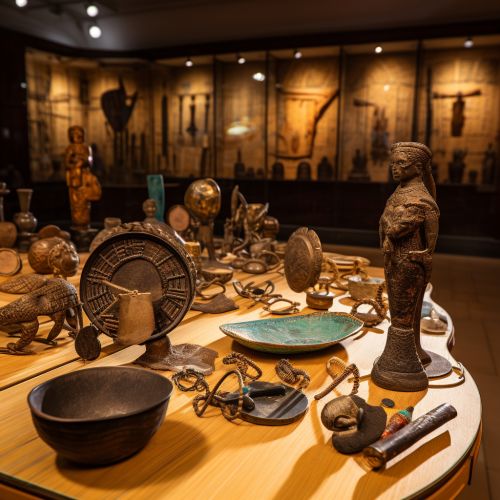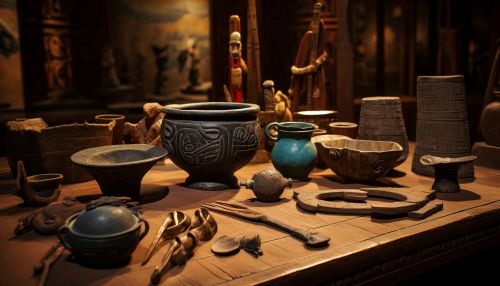Material Culture
Introduction
Material culture refers to the physical objects, resources, and spaces that people use to define their culture. These objects and spaces influence how individuals live their daily lives, interact with one another, and exist in society. Material culture encompasses a wide range of artifacts, from tools and technology to clothing, homes, and neighborhoods. It is a fundamental aspect of anthropology, archaeology, sociology, and history, offering insights into the beliefs, values, ideas, attitudes, and assumptions of past and present cultures.


Understanding Material Culture
Material culture is a complex field that involves the study of objects and their relationships to social, cultural, economic, and political contexts. It is not merely about the objects themselves, but the meanings and uses that people assign to them, and how these objects shape and reflect cultural practices.
Material Culture and Identity
Material culture plays a crucial role in the formation and expression of identity. Objects, whether they are personal possessions or public monuments, can symbolize individual and collective identities. For example, national flags, religious icons, and cultural artifacts can represent a shared identity and heritage. On a personal level, clothing, jewelry, and even the choice of home decor can reflect an individual's personal identity, taste, and social status.
Material Culture and Social Relations
Material culture also influences social relations. The objects that people create and use can reflect social structures and relationships. For example, the size and quality of a person's home can indicate their social status. Similarly, the use of certain technologies or tools can signify a person's role or occupation within a society.
Material Culture and Cultural Change
Studying material culture can provide insights into cultural change over time. Changes in the types of objects that people create and use can reflect shifts in societal values, beliefs, and practices. For example, the transition from handwritten manuscripts to printed books in the 15th century reflected significant changes in technology, literacy, and knowledge dissemination.
Methodologies in Material Culture Studies
Material culture studies employ a variety of methodologies to analyze and interpret objects. These methodologies often draw upon theories and techniques from anthropology, archaeology, history, sociology, and art history.
Artifact Analysis
Artifact analysis is a common method in material culture studies. This involves the detailed examination of an object's physical properties, such as its materials, construction, and condition. It also involves considering the object's context, including its location, associated objects, and any marks or modifications.
Ethnography
Ethnography is another important method in material culture studies. This involves observing and documenting how people interact with objects in their daily lives. Ethnographic studies can reveal how objects are used, the meanings they hold, and the roles they play in social and cultural practices.
Historical Research
Historical research is also crucial in material culture studies. This involves examining historical documents, images, and other sources to understand the historical context of objects. Historical research can reveal how objects were made, used, and valued in the past.
Material Culture in Different Disciplines
Material culture is a key concept in several academic disciplines, each of which approaches the topic from a unique perspective.
Anthropology
In anthropology, material culture is used to understand human behavior, social relationships, and cultural practices. Anthropologists study objects from past and present cultures to gain insights into how these objects are made, used, and valued.
Archaeology
In archaeology, material culture is crucial for understanding past societies. Archaeologists analyze artifacts and features to learn about the people who made and used them. This can provide information about a society's technology, social organization, economy, and beliefs.
History
In history, material culture can provide evidence about past events, people, and ways of life. Historians analyze objects to understand their historical context and significance. This can include studying the material culture of everyday life, such as clothing, furniture, and household items, as well as the material culture of significant events, such as monuments, memorials, and artifacts associated with historical figures or events.
Sociology
In sociology, material culture is used to understand social structures, relationships, and identities. Sociologists study how objects are used and perceived in society, and how these objects reflect and shape social norms, values, and hierarchies.
Conclusion
Material culture is a rich and complex field that offers valuable insights into human societies and cultures. By studying the objects that people create and use, we can learn about their beliefs, values, practices, and ways of life. Material culture is not just about objects, but about the meanings and relationships that these objects embody. It is a crucial aspect of our human existence, shaping and reflecting who we are as individuals and as a society.
